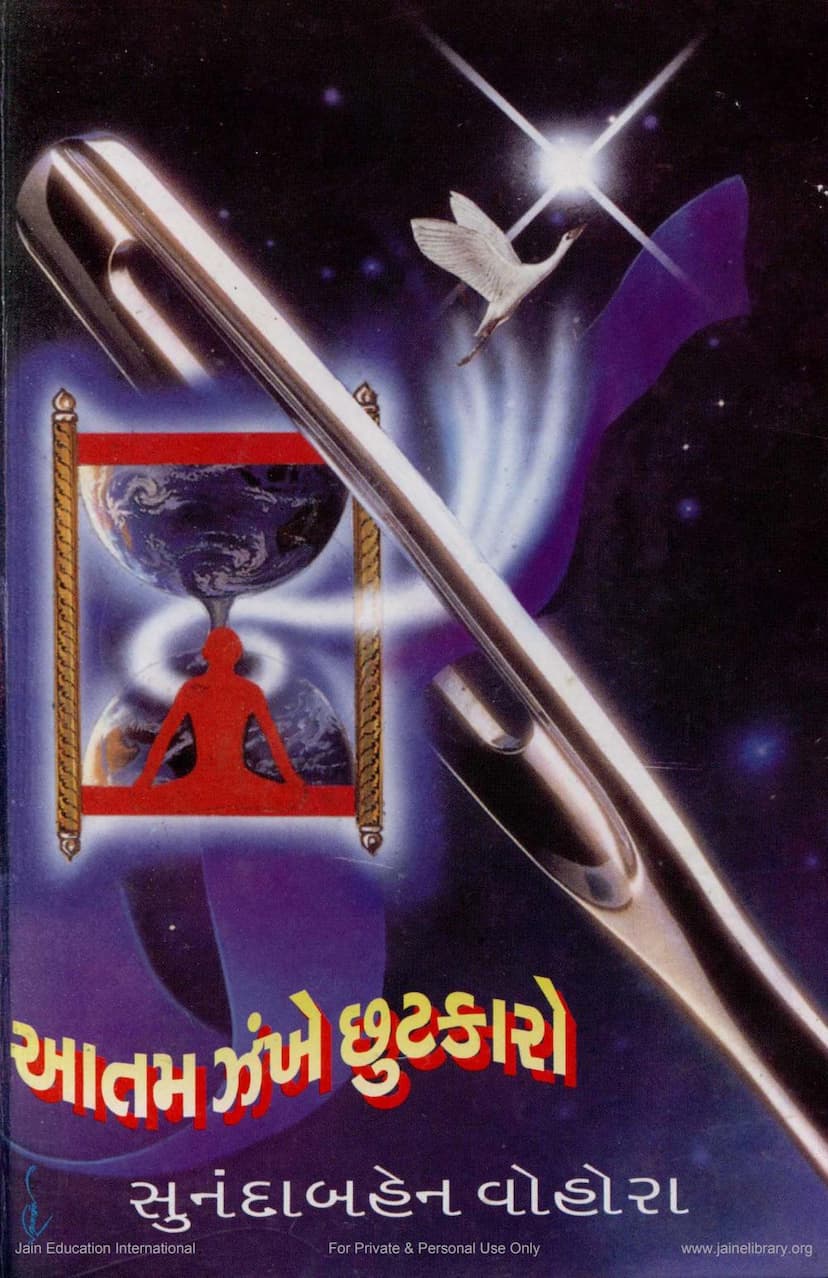Atama Zankhe Chutkaro
Added to library: September 1, 2025

Summary
Here's a comprehensive summary of the Jain text "Atama Zankhe Chutkaro" (The Soul Yearns for Liberation), authored by Sunandaben Vohra and published by Anandsumangal Parivar:
Title: Atama Zankhe Chutkaro (The Soul Yearns for Liberation) Author: Sunandaben Vohra Publisher: Anandsumangal Parivar Catalouge Link: https://jainqq.org/explore/001998/1
Core Theme: The book is a commentary on "Samadhi Shatak" (A Century of Serenity/Equanimity), a significant Jain text composed by the Digambar Acharya Swami. The central message revolves around the soul's inherent yearning for liberation from the cycle of birth and death (samsara) and the path to achieve this liberation through spiritual practices and self-realization.
Key Concepts and Structure:
- Commentary on Samadhi Shatak: The book delves into the teachings of Samadhi Shatak, originally authored by Acharya Swami, with commentary by Acharya Shri Pratyendur and Acharya Shri Prabhachandra. The current work is a further elucidation and re-presentation of these profound spiritual insights.
- Three Stages of the Soul: The text primarily outlines three fundamental stages of spiritual evolution for the soul:
- Bahir-atma (Outer Soul): This refers to the soul engrossed in external worldly pursuits, identifying with the physical body, senses, and possessions. This is the state of ignorance and attachment to the material world, leading to suffering.
- Antar-atma (Inner Soul): This stage represents the soul that begins to turn inward, seeking knowledge of its true nature beyond the physical. It involves detachment from worldly desires and a growing awareness of the soul's inherent purity and potential.
- Param-atma (Supreme Soul): This is the liberated state, the soul that has attained its true, pure, omniscient, and omnipotent form. It is the state of complete freedom from karmic bondage and the cycle of rebirth. The text emphasizes that the journey from Bahir-atma to Param-atma is possible through consistent spiritual practice.
- The Yearning for Liberation: The title itself, "Atama Zankhe Chutkaro," highlights the innate desire of the soul to break free from the chains of samsara. This yearning is presented as the driving force behind spiritual endeavor. The book explores the soul's deep longing for true, unadulterated freedom and the ultimate state of bliss.
- Spiritual Practices and Insights: The text elaborates on various spiritual practices and philosophical concepts that aid in this journey:
- Svadhyaya (Self-Study): The act of reflecting on spiritual truths and the self is considered a constant and natural practice for spiritual seekers.
- Discernment of Reality: The text encourages the practice of distinguishing between the soul (atma) and the non-soul (ajiva), such as the body, senses, and external objects.
- Detachment (Vairagya): The book emphasizes the importance of detachment from worldly pleasures and possessions, which are ultimately impermanent and a source of suffering.
- Equanimity (Samata): Cultivating a balanced state of mind, unaffected by dualities like pleasure and pain, gain and loss, is crucial for spiritual progress.
- The Path to Liberation: The commentary clarifies that liberation is not merely an external act but an inner transformation achieved through deep contemplation, adherence to Jain principles, and the grace of enlightened beings.
- Structure and Content: The book likely follows a systematic approach, explaining the Sanskrit verses of Samadhi Shatak, providing a Gujarati translation (in Harigeet meter for easy recitation), and then offering a detailed commentary. It may also include dohas (couplets) and other poetic forms for deeper understanding and internalization. The emphasis is on Rote learning, study, contemplation, and deep meditation on the verses for spiritual purification.
- Historical Context and Editions: The text mentions that the commentary on Samadhi Shatak was first written by Acharya Shri Madhussagarji about 91 years prior to the book's publication, with a second edition appearing about 60 years earlier. This indicates a lineage of spiritual transmission and the enduring relevance of the teachings. The current publication aims to make these valuable spiritual resources accessible to contemporary readers, especially those who are busy with worldly life.
- Praise and Encouragement: The author, Sunandaben Vohra, expresses her gratitude to the inspirers and contributors, particularly highlighting the financial support from friends abroad, which has enabled the publication of many spiritual books. She encourages readers to engage with the text deeply through recitation, study, contemplation, and meditation to attain ultimate joy and freedom.
In essence, "Atama Zankhe Chutkaro" is a guide for spiritual seekers, offering a profound exploration of the soul's journey towards liberation, emphasizing the transformative power of self-knowledge, detachment, and consistent spiritual practice, rooted in the wisdom of Jain scriptures.